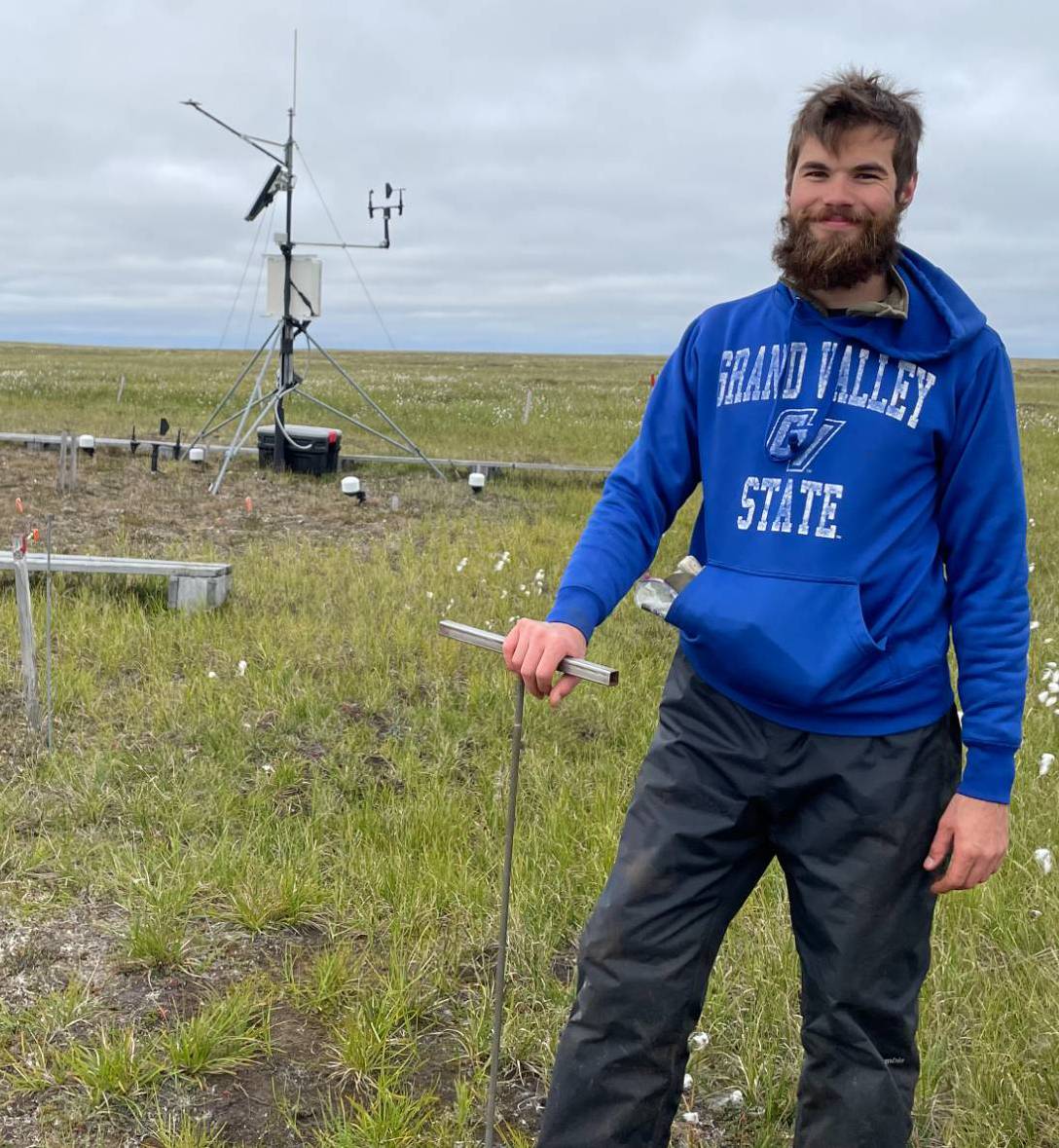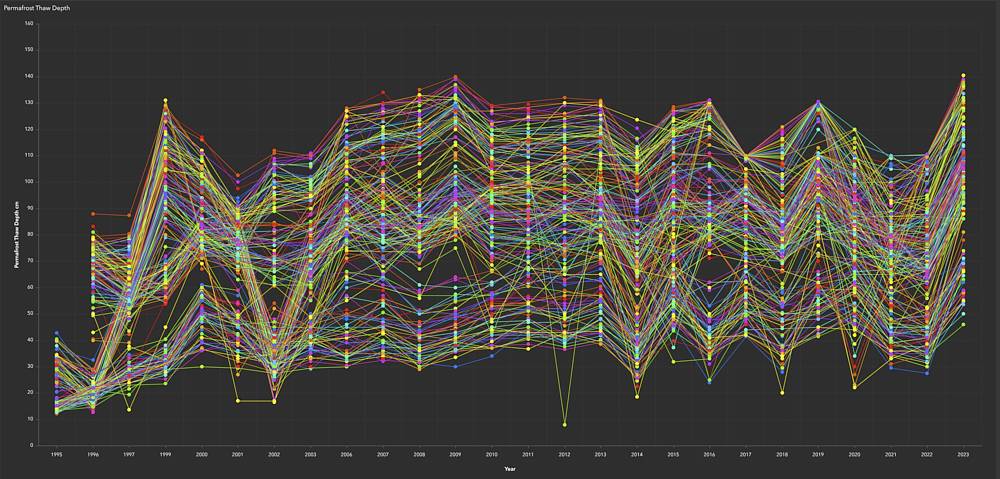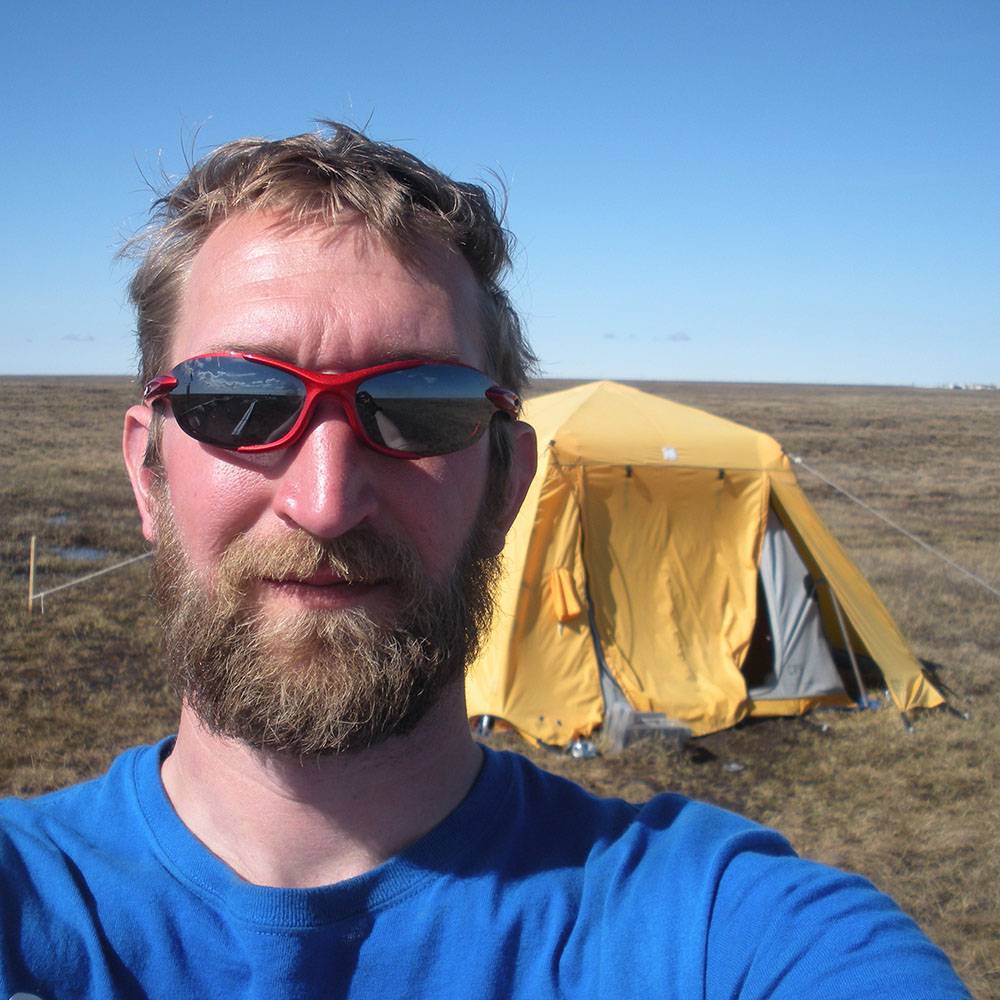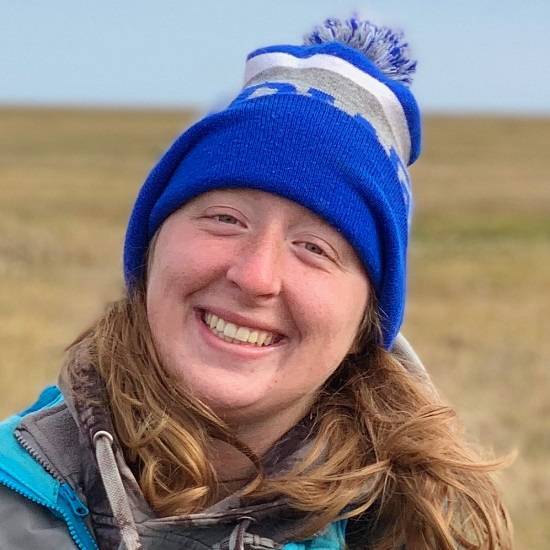Thaw Depth
Beneath the surface of the tundra exists a permanently frozen layer of ground known as permafrost. Permafrost is made up of soil, organic matter, and water that stays trapped underground due to the cold temperatures of the Arctic. Each year, a thin layer of ground close to the surface thaws during the summer months. This layer is commonly referred to as the active layer simply because this is where most of the biological activity that happens in soil takes place. This zone is where microbes and invertebrates can flourish during the warmer summer months, freeing up nutrients that allow plants to grow.
We measure the depth of the active layer at the end of each growing season on the ITEX-AON plots.
The simplest low-tech measurement is to poke a probe until you reach the frozen surface. In areas with lots of water it is easy to tell when you reach the frozen surface (it is literally as hard as ice). In drier regions of the tundra it is less easy to measure and requires probes that measure the temperature.

Learn More
AJ Smith & Michaela Clingaman - Predicting landscape heterogeneity in thaw depth in arctic Alaska
Hannah Clarida - Landscape Effects and Changes in Permafrost Depth in Atqasuk, Alaska
Related Papers
Hollister, R.D., P.J. Webber, F.E. Nelson, and C.E. Tweedie. 2006. Soil thaw and temperature response to air warming varies by plant community: Results from an open-top chamber experiment in northern Alaska. Arctic Antarctic and Alpine Research 38:206–215. 10.1657/1523-0430(2006)38[206:STATRT]2.0.CO;2.
Shiklomanov, N.I., D.A. Streletskiy, F.E. Nelson, R.D. Hollister, V.E. Romanovsky, C.E. Tweedie, J.G. Bockheim, and J. Brown. 2010. Decadal variations of active-layer thickness in moisture-controlled landscapes, Barrow, Alaska. Journal of Geophysical Research 115:G00I04. 10.1029/2009JG001248.



